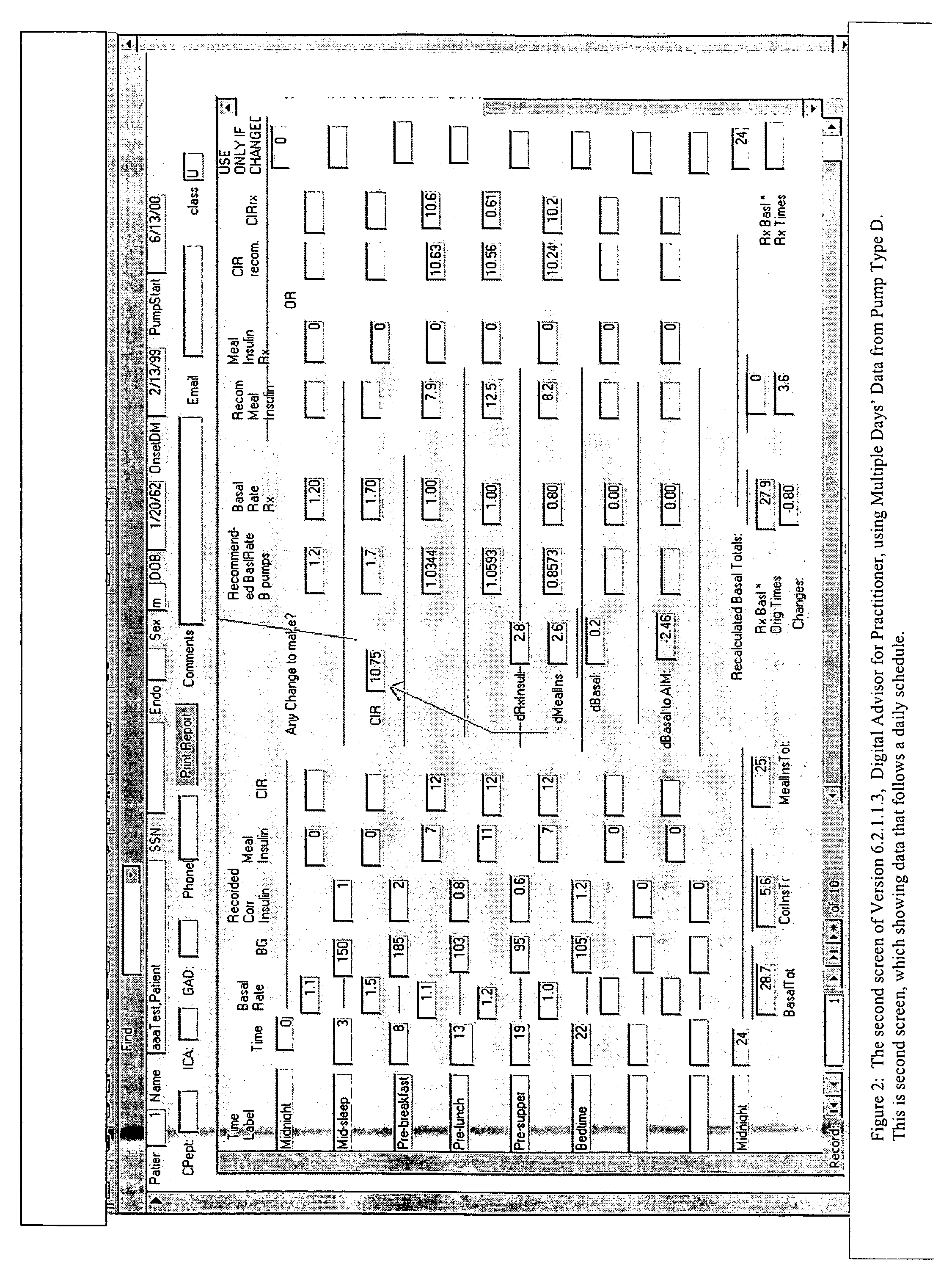Method and system for determining insulin dosing schedules and carbohydrate-to-insulin ratios in diabetic patients
a technology of insulin dosing schedule and carbohydrate-to-insulin ratio, which is applied in the field of digital aids, can solve the problems of inability to meet the needs of diabetic patients, so as to avoid overshooting
- Summary
- Abstract
- Description
- Claims
- Application Information
AI Technical Summary
Benefits of technology
Problems solved by technology
Method used
Image
Examples
Embodiment Construction
1. Table of Contents
The invention is a set of algorithms used to determine the various insulin-dosing rates, and Carbohydrate-to-Insulin Ratio(s) that comprise the daily insulin-dosing schedule for a patient. The “Float Algorithms” apply to all exemplary embodiments described herein. The description, as shown in the table of contents below, is broken down first by “Embodiment” (pump or MDI) and then by “Version” (Daily Update or Multiple Day's Data) and finally by “Algorithm” (Basal Float1, Meal Insulin Float 1, etc).
1. Table of Contents
2. Suffixes and Time Indices
3. Glossary
4. Generic Derivations
4.1 Making Changes in the Carbohdrate-to-Insulin Ratio, CIR
4.2 Some Important Equations 4.2.1 Conventional Insulin Nomenclature 4.2.2 Enhanced Insulin Nomenclature: 4.2.3 General
4.3 The Two-Level Basal System, and the Kf Calculator 4.3.1 Statistical Correlation 4.3.2 Averaging
5. Types of Insulin Delivery Systems
6. Description by, Version, Embodiment, Algorithm
6.1...
PUM
| Property | Measurement | Unit |
|---|---|---|
| Fraction | aaaaa | aaaaa |
| Weight | aaaaa | aaaaa |
| Fraction | aaaaa | aaaaa |
Abstract
Description
Claims
Application Information
 Login to View More
Login to View More - R&D
- Intellectual Property
- Life Sciences
- Materials
- Tech Scout
- Unparalleled Data Quality
- Higher Quality Content
- 60% Fewer Hallucinations
Browse by: Latest US Patents, China's latest patents, Technical Efficacy Thesaurus, Application Domain, Technology Topic, Popular Technical Reports.
© 2025 PatSnap. All rights reserved.Legal|Privacy policy|Modern Slavery Act Transparency Statement|Sitemap|About US| Contact US: help@patsnap.com



